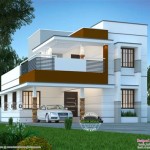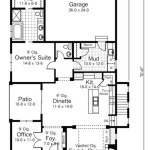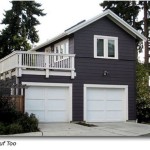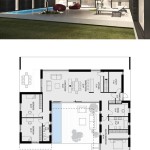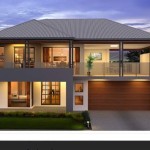House Layout Plans: Creative Ideas For Home Designs
House layout plans are fundamental blueprints that dictate the flow, function, and aesthetic appeal of a dwelling. They represent a critical step in the home design process, defining the spatial relationships between rooms, the arrangement of furniture, and the overall usability of the living space. Creative house layout plans can transform ordinary houses into extraordinary homes, tailored to meet the specific needs and lifestyles of their occupants. This article explores a range of creative ideas for house layout plans, catering to different design preferences, family sizes, and functional requirements.
The ideal house layout plan should prioritize both functionality and aesthetics. It should facilitate seamless movement between different areas of the home, optimize natural light penetration, and create distinct zones for various activities, such as relaxation, work, and entertainment. It should also reflect the occupants' personal style and preferences, incorporating elements that make the house feel like a true home. The principles of good design, such as balance, proportion, harmony, and rhythm, should be carefully considered to create a visually appealing and comfortable living environment.
In the initial stages of planning, the homeowner should identify their needs and priorities. Factors like lifestyle, family size, budget, and desired features play a significant role in shaping the layout. Do they frequently entertain guests? Do they work from home? Do they require a dedicated playroom for children? These questions help determine the size and number of rooms, the flow of traffic, and the placement of key features.
Open Concept Living: Blurring the Lines Between Spaces
Open concept living is a popular trend in modern house design, characterized by the absence of walls between the main living areas, such as the kitchen, dining room, and living room. This design approach creates a spacious and airy atmosphere, fostering a sense of connection and social interaction. It is particularly well-suited for families with young children, as it allows parents to supervise activities in different areas of the home simultaneously.
One of the key advantages of open concept living is its versatility. The large, undefined space can be easily adapted to different needs and preferences. For example, a portion of the living room can be converted into a home office or a play area, depending on the family's changing circumstances. The open layout also provides greater flexibility in furniture arrangement, allowing homeowners to experiment with different layouts and create unique focal points.
However, open concept living also presents some challenges. Noise can travel easily between different areas, potentially disrupting activities that require quiet, such as reading or working. Lack of visual privacy can also be a concern for some individuals. To mitigate these challenges, designers often incorporate subtle visual cues to define different zones within the open space. These cues may include changes in flooring material, area rugs, varying ceiling heights, or strategically placed furniture groupings.
Strategic lighting also plays a crucial role in defining zones within an open concept space. Task lighting can be used to illuminate specific work areas, while ambient lighting can create a warm and inviting atmosphere in the living room. Accent lighting can be used to highlight architectural features or artwork, adding visual interest to the space. A carefully planned lighting scheme can help to create a sense of cohesion and harmony within the open layout.
The kitchen is often the focal point of an open concept living space. The island serves as a central hub for food preparation, serving, and socializing. It can also provide additional seating and storage space. The design of the kitchen island should complement the overall aesthetic of the open concept space, incorporating materials and finishes that are both durable and visually appealing.
Zoning for Privacy and Functionality: Creating Distinct Areas
While open concept living offers numerous benefits, it is not always the most suitable option for every household. Some individuals prefer a more compartmentalized layout, with distinct rooms dedicated to specific activities. Zoning is a key concept in house layout planning, allowing designers to create distinct areas within the home that cater to different needs and preferences. This approach can be particularly beneficial for families with diverse lifestyles or for individuals who value privacy and quiet.
Zoning involves dividing the house into different areas based on their primary function. For example, the sleeping area typically includes the bedrooms and bathrooms, while the living area encompasses the living room, dining room, and kitchen. A work area may include a home office or a study, while a recreation area may include a playroom, a game room, or a home theater.
The placement of these zones within the house is crucial for creating a functional and comfortable living environment. The sleeping area should be located away from noisy areas of the house, such as the kitchen or the living room, to ensure a peaceful and restful sleep. The work area should be situated in a quiet and secluded location, away from distractions. The recreation area can be placed in a more central location, easily accessible to all members of the household.
Buffer zones can be used to further enhance privacy and minimize noise transfer between different areas of the house. A buffer zone is a space that acts as a transition between two distinct zones. For example, a hallway can serve as a buffer zone between the living area and the sleeping area, providing a sound barrier and reducing visual distractions.
The design of the individual rooms within each zone should reflect their specific function. The bedrooms should be designed to promote relaxation and sleep, incorporating calming colors, comfortable furniture, and adequate storage space. The kitchen should be designed for efficiency and functionality, with ample counter space, storage cabinets, and high-quality appliances. The living room should be designed for socializing and entertainment, with comfortable seating, a large-screen television, and a sound system.
Incorporating Natural Light and Outdoor Living Spaces
Natural light is an essential element of good house design. It can brighten up the interior spaces, enhance the feeling of spaciousness, and improve the overall mood and well-being of the occupants. Incorporating natural light into the house layout plan is crucial for creating a healthy and comfortable living environment. Similarly, seamlessly integrating outdoor living spaces expands the usable dimensions of a home. This integration offers areas for relaxation, recreation, and entertainment, while forging a connection with the natural environment.
The orientation of the house on the lot plays a significant role in determining the amount of natural light that enters the interior spaces. In the Northern Hemisphere, south-facing windows receive the most sunlight throughout the year. East-facing windows receive morning sunlight, while west-facing windows receive afternoon sunlight. North-facing windows receive indirect sunlight, which is ideal for areas that require consistent and diffused light.
The size and placement of windows should be carefully considered to maximize natural light penetration. Large windows can bring in more light, but they can also lead to increased heat gain in the summer and heat loss in the winter. Skylights are an excellent way to bring natural light into areas that do not have exterior walls, such as hallways or bathrooms. Light wells can be used to bring natural light into basements or other subterranean spaces.
Outdoor living spaces, such as patios, decks, and porches, can extend the living space of the house and provide opportunities for outdoor recreation and relaxation. These spaces should be designed to be both functional and visually appealing, incorporating elements such as comfortable seating, outdoor lighting, and landscaping. A covered patio can provide shade and protection from the elements, allowing for year-round enjoyment of the outdoor space.
The connection between the indoor and outdoor spaces should be seamless. Large sliding glass doors or French doors can create a visual and physical connection between the living room and the patio, allowing for easy access and a continuous flow of space. Landscaping can be used to soften the transition between the house and the yard, creating a more natural and inviting outdoor environment. The layout of the home should consider the placement of these outdoor spaces, ensuring convenient access and maximizing their usability.
Furthermore, careful consideration should be given to privacy when designing outdoor living spaces. Fences, hedges, or strategically planted trees can provide privacy from neighbors or passersby. Outdoor lighting can be used to create a warm and inviting atmosphere while also enhancing security. By carefully planning the design and layout of outdoor living spaces, homeowners can create a valuable extension of their living space that enhances their quality of life.

30 Creative House Plan Ideas Engineering Discoveries Plans Little Model

Creative Home Layout Interior Design Ideas

Discovering House Plans Top 7 Questions Answered

Floor Plan Friday U Shaped Home

Creative 3d Floor Plan Design Ideas Engineering Discoveries Home Plans Small House
Creative House Plan Ideas For Every Space

Search Homepw26051 Four Bedroom Dutch Home Plans At Homeplans Com 4 House

Floor Plan Creator Planner 5d

Stylish And Functional Floor Plan With A Spacious Master Suite

Floor Plan Creator Planner 5d
Related Posts



